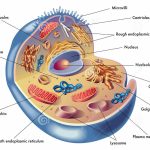Our Amazing Teeth
The four front teeth in each arch are called incisors, and their function is to cut food with their sharp thin edges. On each side of the incisors, at the corners of the mouth, are the canines. These teeth have one cusp, or pointed edge, and are used for holding or grasping food, and are very strong, stable teeth. Behind the canines are the premolars, which are designed for holding food like the canines because they have cusps, but they also function to crush food. Sometimes these teeth are referred to as bicuspids, meaning two cusps, but this is not always accurate because some premolars may have three cusps. Therefore the term premolar is preferred. The teeth farthest back in the mouth are the molars. These teeth have broad chewing surfaces with four or five cusps, and are designed for grinding food. The incisors and canines are called anterior teeth, because they are located in the front of the mouth, while the premolars and molars are called posterior teeth because they are located in the back of the mouth (Figures 11 & 12).
| Figure 11. Primary Dentition |
 |
| Primary dentition diagram of primary teeth in order in the arch. |
| Image source: “General Chairside Assisting: A Review for a National General Chairside Exam”. |
| Figure 12. Permanent Dentition |
 |
| Permanent dentition diagram of permanent teeth in order in the arch. |
| Image source: “General Chairside Assisting: A Review for a National General Chairside Exam”. |
In addition to aiding in acquiring and chewing food, teeth perform several other important functions within the oral cavity. They begin the digestive process by breaking down food; they protect the oral cavity; they aid in proper speech; and they affect physical appearance. There are several types of teeth, and each performs its own special function in the chewing process, depending on its size, shape and location within the jaws. Starting at the midline, the permanent dentition is comprised of incisors, canines, premolars and molars. The primary dentition is the same except it has no premolars.
Incisors
There are four incisors in each arch. Two central incisors and two lateral incisors.
-
Location – the central incisors are side by side at the midline. There is a lateral incisor on each side of the central incisors.
-
Shape – single rooted, crowns are arched and angle toward one sharp incisal edge.
-
Function – to cut or incise food with their thin edges.
Canines
There are two canines in each arch. They are sometimes referred to as cuspids.
-
Location – next to the lateral incisors, establishes the cornering of the arches.
-
Shape – anchored with the longest root, one pointed cusp.
-
Function – used for holding, grasping, and tearing food. Referred to as the cornerstone of the mouth.
Premolars
There are for premolars in each arch. Two first premolars and two second premolars. They are sometimes referred to as bicuspids. There are no premolars in the primary dentition.
-
Location – first premolars are next to the canines followed by the second premolars.
-
Shape – maxillary first premolars have a bifurcated root, all others have one root, one prominent cusp with one or two lesser lingual cusps.
-
Function – holding food, like canines because they have cusps; also to crush food.
Molars
There are three molars in each arch of the permanent dentition. Two first molars, two second molars and two third molars. Third molars are sometimes called wisdom teeth. There are two molars in each arch of the primary dentition. Two first molars and two second molars.
-
Location – first molars are next to the second premolars, second molars next to the first molars and third molars next to the second molars. The third molars are the farthest teeth in the mouth.
-
Shape – bifurcated or trifurcated roots, broad chewing surfaces with four to five cusps.
-
Function – grinding food.
A tooth is divided into two main sections, the crown and the root. The crown is the portion of the tooth that is most visible in the mouth, and the root is the portion that is normally not visible because it is embedded within the bone. A tooth either will have a single root, or will have multiple roots. If a root is divided into two segments, it has a bifurcation; if a root is divided into three segments it has a trifurcation. Each root has an apex, which is the end of the root.
The crown of a tooth is covered with enamel and the root is covered with cementum. Therefore, the area where the crown and the root meet is known as the cementoenamel junction (CEJ). This area is also known as the cervix or cervical line of the tooth (Figure 13).4
| Figure 13. Divisions and Tissues of a Tooth |
 |
| Parts of the teeth and surrounding tissues. |
There are four tissues that make up a tooth. Enamel, dentin, and cementum are the hard tissues of a tooth. The pulp is the soft tissue. Enamel, which forms the outer surface of the crown of the tooth, is the hardest tissue in the body, thus making the tooth able to withstand a great amount of stress, chewing pressure and temperature change. Enamel is formed by ameloblasts. Once enamel is completely formed, it does not have the ability for further growth or repair, but it does have the ability to remineralize. This means that areas experiencing early demineralization (loss of minerals) are able to regain minerals and stop the caries process. This process of demineralization and remineralization can occur without loss of tooth structure when adhering to proper nutrition and oral care. Enamel is somewhat translucent and due to the fact that is covers the dentin, the tooth receives it hue and tint from the underlying dentin.
Dentin comprises the main portion of the tooth; it is softer than enamel but harder than bone. Dentin is infiltrated in its entirely by microscopic canals called dentinal tubules. These tubules contain dentinal fibers that transmit pain stimuli and nutrition throughout the tissues. The dentin is formed by odontoblasts. There are three types of dentin referred to as primary, secondary and tertiary. The dentin that forms when a tooth erupts is called primary dentin. Unlike enamel, dentin does have the ability for further growth, and the dentin that forms inside the primary dentin is called secondary dentin. This secondary dentin will continue to grow throughout the life of the tooth and can result in a narrowing of the pulp canal. The third type of dentin, also known as reparative dentin, forms as a response to irritation and trauma such as erosion and dental caries.
Cementum is the tissue that covers the root of the tooth in a very thin layer. It is not as hard as enamel or dentin, but it is harder than bone. It contains attachment fibers that help to anchor the tooth within the bone. There are two types of cementum. Primary cementum (or acellular cementum) covers the entire length of the root, and does not have growth capability. Once a tooth has erupted and has reached functional occlusion (when it is used for chewing) secondary, or cellular, cementum continues to form on the apical half of the root.
The pulp is located in the center of the tooth, and is surrounded by dentin. The pulp cavity is divided into two areas: the pulp chamber, located in the crown of the tooth; and the pulp canal(s), located in the root(s) of the tooth. When a tooth first erupts, the pulp chamber and canal are large, but as secondary dentin forms they decrease in size. The pulp is composed of blood vessels, lymph vessels, connective tissue, nerve tissue, and cells which are able to produce dentin; therefore the pulp nourishes the tooth and repairs dentin. The nerve supply in the pulp transmits the signals of sensitivity and pain through a small foramen (hole) in the apex of the root. If the pulp tissues become necrotic (die) then a root canal procedure is recommended to save the tooth (see Figure 13).
In order to identify specific locations on a tooth, it is divided into surfaces and each surface has a specific name. The surfaces are named according to the direction in which they face (Figure 14).2 The surfaces of teeth are as follows:
-
Lingual – the surface of a tooth facing the tongue.
-
Facial – the surface of a tooth facing the cheeks or lips. This surface can also be known as:
-
labial – the surface of an anterior tooth facing the lips.
-
buccal – the surface of a posterior tooth facing the cheeks.
-
-
Proximal – the surface of a tooth that faces a neighboring tooth’s surface; each tooth has two proximal surfaces.
-
mesial – the surface of a tooth that is closest to the midline (middle) of the face.
-
distal – the surface of a tooth that faces away from the midline of the face.
-
-
Occlusal – the chewing surface of posterior teeth.
-
Incisal Ridge (or edge) – the biting edge of anterior teeth.
| Figure 14. Surfaces of the Teeth | ||
 Depending on the type of tooth and where it is located in the mouth, it is important to be able to recognize the various anatomical structures of a tooth. Each tooth has certain features that set it apart. The contact point where a tooth touches another tooth is often at the height of contour, or the widest bulging point. An embrasure is the triangular space formed between the contouring angles of adjacent teeth and gingiva. Figure 15 identifies additional landmarks found on certain anterior or posterior teeth.1 Depending on the type of tooth and where it is located in the mouth, it is important to be able to recognize the various anatomical structures of a tooth. Each tooth has certain features that set it apart. The contact point where a tooth touches another tooth is often at the height of contour, or the widest bulging point. An embrasure is the triangular space formed between the contouring angles of adjacent teeth and gingiva. Figure 15 identifies additional landmarks found on certain anterior or posterior teeth.1
|
Arches
The teeth are arranged in the oral cavity in two separate arches. The upper teeth are located in the maxillary arch; the lower teeth are located in the mandibular arch (Figure 16). The maxillary arch is immovable, while the mandibular arch is capable of movement. The teeth are normally arranged in the maxillary and mandibular arches in such a way that they will function properly and the position of each tooth is maintained.
Quadrants
Each arch can be divided in half by an imaginary vertical line drawn through the center of the face (the midline). Each half of the arch is called a quadrant. Thus there are four quadrants: maxillary right, maxillary left, mandibular right, and mandibular left (Figure 16).2
| Figure 16a. Primary Teeth Arches and Quadrants |
 |
| Image courtesy of Mosby’s Comprehensive Dental Assisting: A Clinical Approach. |
| Figure 16b. Permanent Teeth Arches and Quadrants |
 |
| Examples of the arches and quadrants of both primary and permanent dentition. |
It seems self explanatory that such a complex structure and design could only come from a design, not by chance.




